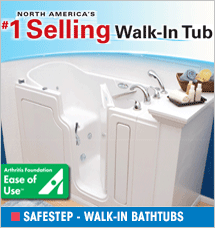Financial Fortitude
For-profit Nursing Care: Befriend or Beware?

My friend Chris is jealous of me because my folks freely chose to move to a retirement community at age 85, while they still had lots of good options. Chris wants to bring her dad to an attractive for-profit facility near her own house. He is fighting the move desperately, though he no longer can adequately care for himself. Among other objections, he says the monthly cost is too high, while Chris retorts, “That’s what your money is for.”
They’re both right.
Moving from home to senior care can be a wrenching decision. Finding the right match for yourself or your loved one is the complicated follow-on. One important criterion that is often overlooked is a facility’s ownership. How do for-profit and not-for-profit senior care facilities compare?
Writer Christopher Cheney compared profit and non-profit hospitals in a 2017 article; his analysis is helpful for senior nursing care as well. Cheney notes “significant cultural and operational differences, such as strategic approaches to scale and operational discipline.” While each facility deserves to be evaluated on its own merits, these cultural and operational differences add up to significant variances between the two types of facility.
- Cost: All nursing care is expensive. The 2019 average cost for a semi-private and private rooms ranges from $27,573-$29,291 per month in Alaska to $4639-$5293 per month in Oklahoma. Though it is difficult to obtain comparative figures, non-profits facilities are generally less costly. This can be attributed both to some lower costs (such as taxes, which non-profits don’t pay) and no need to provide profit to shareholders.
Costs are increasing at much higher than the inflation rate. A study by Georgetown University Medical Center found nursing home price rises over the period 2002-2011 surpassed increases in overall medical care (20.2%) and general consumer prices (11.7%).
- Culture: Yvette Doran, chief operating officer at Saint Thomas Medical Partners in Nashville, Tennessee, says, "When I think of the differences [between profit and non-profit], culture is at the top of my list. The culture at for-profits is business-driven. The culture at nonprofits is service-driven," she says. For-profit businesses are designed for the express purpose of returning a profit for their investors.
- Competitive edge: Profit organizations have a competitive edge in negotiating contracts. Says Doran, “The appetite for aggressive negotiations is much more palatable among for-profits." Good negotiating can keep some costs lower, though these savings are not necessarily passed on to residents.
- Financial pressure: profit organizations are driven in their quest to drive down costs and improve profit. Brian B. Sanderson, managing principal of healthcare services at Oak Brook, Illinois–based Crowe Horwath LLP, says, “The compensation structures in the for-profits tend to be much more incentive-based than compensation at not-for-profits."
- Operational discipline. For-profits are accountable to the shareholders, not the residents. Operations are designed around keeping control of the numbers: making staff accountable for reliable operations, predictable control, and reliable outcomes.
- Quality care: Here is where non-profits shine. In a landmark 1986 Institute of Medicine (IoM) study, for-profit and chain-operated nursing facilities tended to devote fewer resources to direct patient care. The study analyzed licensure violations, complaints, and outcome-oriented quality measures, finding generally poorer quality of care for residents.
These early findings have been replicated repeatedly, with consistent results. For-profit facilities, especially multi-state chains, are more likely to cut costs in resident care, such as for nurse staffing levels and pay, and increase corporate overhead and profits.
A 2016 Boston Globe review by the Boston Globe found that for-profit nursing homes spend about 10% less on food and $11 per day less on nursing care, while being cited by state inspectors for health and safety violations 60% more than non-profits.
- Scale: For-profit nursing care facilities are typically larger, often operating multiple facilities. This allows them economies of scale which can keep costs in check.
- strong>Tax status: Profit-based facilities pay taxes such as sales tax and property tax. This increases costs for profit facilities, forcing them to be more efficient. The local taxes they pay can be a boon to the local community.
Whatever the preference for seniors, for-profit care is becoming the norm. While the majority of hospitals are non-profit, the opposite is true for senior care. As of 2008, about 65% of nursing homes were owned by for profit entities. In 2016 this figure was nearly 70%, according to the Center for Disease Control.
For whatever facility you may be considering, it is important to take a tour. Ask the staff questions along the lines of, "How long have you been here? What do you like and dislike about your work? How many residents to you work with?” Eat a meal and get a feel for the culture and the satisfaction level of residents. Notice whether residents are being cared for with dignity.
Chris has done all these things with her dad and believes the for-profit retirement community near her home would be a good fit. Debra Lancaster, executive director of the Center for Women and Work at the Rutgers School of Management and Labor Relations, would have no qualms with Chris’s conclusion.
"Because the evidence suggests that residents have better outcomes in facilities that are owned by non-profits, that's a very reasonable place to start," she says. But she adds, "certainly individual for-profit facilities can be incredibly mission-driven and have good quality outcomes." And non-profits can lose sight of the big picture, just as any organization can.
Differences Between Profit and Non-profit Senior Care Facilities
- Cost
- Culture
- Competitive edge
- Financial pressure
- Operational discipline
- Quality of care
- Scale
- Tax status
Karen Telleen-Lawton helps seniors help themselves by providing bias-free financial advice. She is a Certified Financial Planner™ professional, the Principal of Decisive Path Fee-Only Financial Advisory in Santa Barbara, California (http://www.DecisivePath.com). Reach her with your questions or comments at This email address is being protected from spambots. You need JavaScript enabled to view it. .



























































